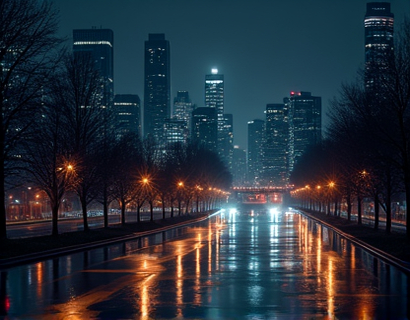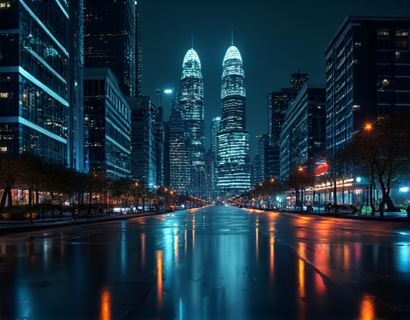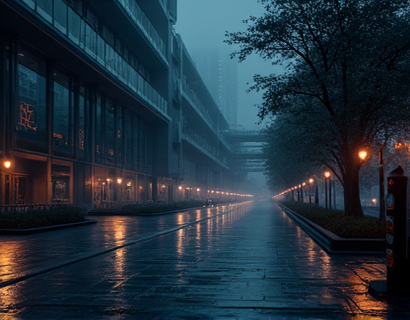Ultimate Guide to the Cultural Heritage, Historical Sites, and Travel Insights of the Ancient Indus Valley
The Indus Valley, a cradle of one of the world's oldest civilizations, beckons travelers and cultural heritage enthusiasts with its rich history, intricate urban planning, and mysterious script. Spanning across present-day Pakistan and northwestern India, this ancient region offers a profound journey into the past, where the echoes of a sophisticated society still resonate. This comprehensive guide delves deep into the cultural heritage, historical landmarks, and practical travel tips to ensure an enriching and unforgettable experience in this timeless land.
Historical Background and Significance
The Indus Valley Civilization, also known as the Harappan Civilization, flourished around 2600 BCE to 1900 BCE. It is one of the three ancient civilizations of the Old World, alongside Mesopotamia and Ancient Egypt. The civilization is named after the city of Harappa, one of its major urban centers, discovered in the 1920s. The Indus Valley Civilization is renowned for its advanced urban planning, sophisticated water management systems, and the use of a yet-to-be-deciphered script. The cities of Mohenjo-Daro and Harappa stand as testaments to the engineering prowess and social organization of this ancient culture.
The civilization's significance lies in its contributions to urban planning, architecture, and social organization. The cities were built with baked bricks, featuring well-planned streets, drainage systems, and public baths. The uniformity in brick size and the standardized weights and measures used indicate a high level of administrative control and economic sophistication. The Indus Valley people were skilled artisans, producing pottery, jewelry, and tools with remarkable craftsmanship. Their trade networks extended to Mesopotamia, indicating a robust economic system.
Major Historical Sites to Visit
Visiting the historical sites of the Indus Valley is akin to stepping into a time machine. Each site offers a unique glimpse into the lives of the people who once inhabited this land.
Mohenjo-Daro
Located in the province of Sindh, Pakistan, Mohenjo-Daro is one of the most excavated and well-preserved cities of the Indus Valley Civilization. The site is divided into two main areas: the Citadel and the Lower Town. The Citadel features the Great Bath, a large public bathing structure, and the Pillared Hall, a mysterious structure with intricate stone carvings. The Lower Town showcases the residential areas, with well-planned streets and sophisticated drainage systems. Visitors can explore the granaries, workshops, and the impressive drainage system that was ahead of its time.
Harappa
Situated in the Punjab province of Pakistan, Harappa is another significant site that provides insights into the daily life and social structure of the Indus Valley people. The site includes the Granary, a large public storage structure, and the Citadel, which houses the largest public bath in the Indus Valley. The Lower Town of Harappa reveals the residential quarters, with houses featuring inner courtyards and sophisticated drainage systems. The site also includes a unique stone structure known as the "Great Granary," which suggests a complex economic and administrative system.
Kalibangan
Located in the Rajasthan province of India, Kalibangan is known for its early evidence of urban planning and the world's oldest known fire altars. The site features a well-planned street layout, with a central avenue and perpendicular streets. The most notable feature is the sophisticated drainage system, including covered drains and a public bath. Kalibangan also provides insights into the agricultural practices of the Indus Valley people, with evidence of advanced irrigation techniques.
Dholavira
Positioned in the Rann of Kutch in Gujarat, India, Dholavira is one of the least excavated but most intriguing sites. It is known for its advanced water management systems, including reservoirs, stepwells, and a sophisticated drainage system. The site is divided into four main quarters, each with its own unique features. The "Script Block" is a notable area where many inscribed tablets have been found, offering clues to the Indus script. The "Citadel" area features a large open space, possibly used for public gatherings or ceremonies.
Cultural Heritage and Artifacts
The cultural heritage of the Indus Valley is rich and diverse, reflected in the artifacts that have survived the test of time. These artifacts provide valuable insights into the daily life, beliefs, and artistic achievements of the Indus people.
One of the most fascinating aspects of Indus Valley culture is its pottery. The pottery is known for its fine craftsmanship, with a variety of shapes, sizes, and decorations. Pottery vessels were used for both practical and ceremonial purposes, and some feature intricate designs and motifs. The use of wheel-made pottery indicates a high level of technological advancement.
Jewelry and personal adornments are another significant aspect of Indus Valley culture. Beads made from various materials such as steatite, carnelian, and lapis lazuli have been found in abundance. These beads were used to create necklaces, bracelets, and other decorative items. The precision and variety of these beads suggest a well-developed craft industry. Gold and silver jewelry, though less common, also points to the wealth and trade connections of the Indus people.
The Indus Valley people were also skilled in metalwork, producing tools, weapons, and ornaments from copper, bronze, and tin. The discovery of a bronze statuette of a dancing girl at Mohenjo-Daro is a testament to their artistic talent. The statuette, with its detailed depiction of the dancer's pose, showcases the artistic sophistication of the civilization.
Religious and ceremonial artifacts, such as seals and figurines, provide insights into the spiritual beliefs of the Indus people. The most famous artifact is the "Pashupati Seal," discovered at Mohenjo-Daro, which some scholars interpret as a representation of a proto-Shiva figure. Other seals depict animals, plants, and abstract symbols, suggesting a complex religious system. The presence of public baths and the emphasis on cleanliness in urban planning also indicate a strong focus on ritual purity.
Travel Insights and Practical Tips
Visiting the historical sites of the Indus Valley requires careful planning and preparation to ensure a memorable and enriching experience. Here are some practical tips to help you make the most of your journey.
Best Time to Visit: The optimal time to visit the Indus Valley sites is from September to March, when the weather is pleasant and cooler. Summers can be extremely hot, making outdoor exploration challenging.
Dress Code: Dress modestly, especially when visiting religious sites. Lightweight, breathable clothing is recommended, along with comfortable walking shoes. Sunscreen and a hat are essential to protect yourself from the sun.
Getting There: The nearest international airports are in Lahore, Pakistan, and Ahmedabad, India. From these cities, you can take domestic flights or trains to the respective sites. Local transportation, including taxis and rickshaws, is available but ensure you use reputable services.
Guided Tours: Consider joining a guided tour to gain deeper insights into the history and significance of the sites. Local guides can provide valuable information and help you navigate the complex layouts of the cities.
Respect Local Customs: Show respect for local customs and traditions. Dress appropriately, especially when visiting religious sites, and ask permission before taking photographs of people.
Conservation Efforts: The Indus Valley sites are protected but face challenges from environmental and human factors. Support conservation efforts by adhering to site rules and avoiding any actions that could damage the structures.
Local Cuisine: Indulge in the local cuisine, which offers a blend of flavors influenced by the region's history. Try traditional dishes like biryani, kebabs, and sweets like gulab jamun and jalebi. Don't forget to try the local beverages, such as lassi and fresh fruit juices.
Essential Items to Pack: Bring a good camera, a reusable water bottle, a first-aid kit, and a power adapter for charging electronic devices. A small backpack or daypack is useful for carrying essentials during site visits.
Hidden Gems and Local Attractions
While the major sites are must-visits, the Indus Valley region offers several hidden gems and local attractions that can enhance your travel experience.
Thatta: Located near Mohenjo-Daro, Thatta is a historic city with a rich cultural heritage. The Shah Jahan Mosque, built in the 17th century, is a stunning example of Mughal architecture. The city also offers a glimpse into traditional Sindhi life, with bustling markets and local crafts.
Lahore: If you're visiting from the Indian side, a detour to Lahore, the cultural capital of Pakistan, is worthwhile. Visit the Lahore Fort, the Badshahi Mosque, and the vibrant Lahore City Market. The city is known for its food, music, and arts.
Kutch Desert: For a unique experience, explore the Rann of Kutch, a seasonal salt marsh in Gujarat, India. During the dry season, the area transforms into a vast white desert, perfect for camel safaris and stargazing. The local communities offer insights into traditional desert life.
Handicrafts: Indus Valley is renowned for its handicrafts, including block printing, embroidery, and pottery. Visit local markets and workshops to see artisans at work and purchase unique souvenirs. Support local artisans by buying handmade products.
Cultural Festivals: If your visit coincides with local festivals, immerse yourself in the vibrant culture. Festivals like the Sindhi New Year (Sindhi New Year's Day) and the Urs of Shah Abdul Latif Bhitai offer a glimpse into the region's traditions and spirituality.
Conclusion
The Indus Valley Civilization is a treasure trove of history, culture, and human achievement. From the advanced urban planning of its cities to the intricate artifacts that tell stories of daily life, this ancient region continues to captivate and inspire. By following this guide, you can embark on a journey that not only educates but also enriches your soul. Embrace the opportunity to walk in the footsteps of a civilization that thrived over 4,000 years ago, and carry the memories of this timeless land with you long after you leave.










































